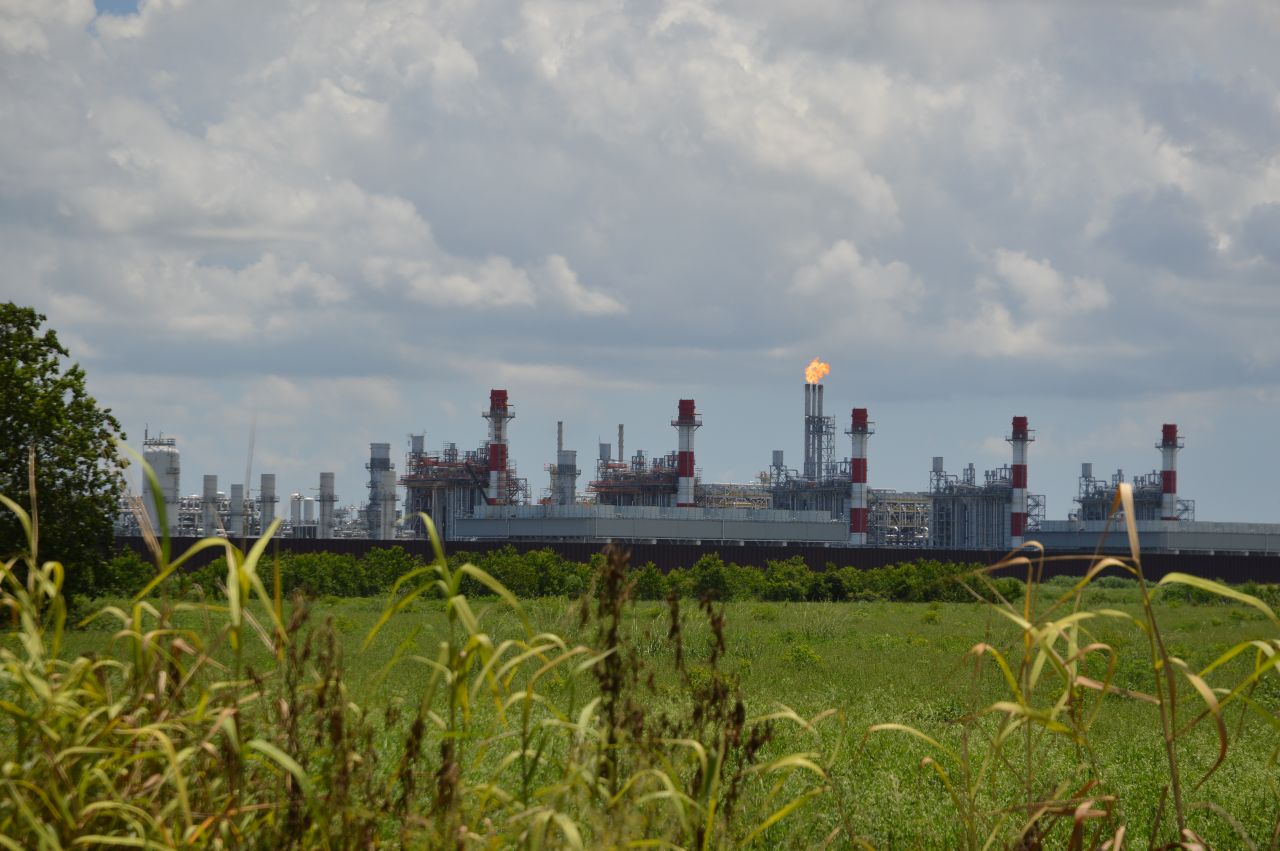Welcome to Oil & Gas Watch News

Greenhouse gases are driving profound changes to the Earth’s climate, contributing to record-breaking heat waves and droughts, millions of acres of wildfires, and widespread flooding from sea-level rise, among many other problems.
In the face of this crisis, some industry advocates have tried to position natural gas as a “bridge fuel” to a green future. Production of both natural gas and oil in the U.S. have skyrocketed over the last decade and a half as a new combination of extraction techniques -- hydraulic fracturing and horizontal drilling – made the U.S. the largest oil and gas producer in the world.
This massive buildup of the industry has included not just drilling sites and wells – although that’s what people most often associate with oil and gas. Downstream from those oil and gas wells, a vast web of pipelines, tanks, compressor stations, processing plants, refineries, liquefied natural gas export terminals, and chemical plants is also spreading across the U.S., often outside the consciousness of the public.
This oil and gas infrastructure produces an enormous amount of greenhouse gas as well as other environmental problems – including air pollutants like sulfur dioxide in lower-income communities of color – that are often not taken into account when experts calculate the toll of the industry on the environment and public health.
The goal of Oil & Gas Watch is to fill that information gap and set the record straight – and empower communities living downwind with the documents and information needed to protect themselves.
A research and communications program of the nonprofit Environmental Integrity Project (EIP), Oil & Gas Watch features an online public database with public records and data from hundreds of oil and gas related expansion and construction projects across the country.
The Oil & Gas Watch News website builds on that database by providing analysis and reports based on those public records, as well as insights, investigations, updates, and profiles of communities and people whose lives are being changed by the dramatic expansion of the industry.
The writers you’ll read on this website include Brendan Gibbons, a Texas-based oil and gas reporter for EIP and veteran environmental journalist; Alexandra Shaykevich, Research Manager at EIP and coordinator of the Oil & Gas Watch database; Lisa Graves-Marcucci, community outreach coordinator for EIP in western Pennsylvania; and Tom Pelton, an award-winning environmental journalist and author who serves as Director of Communications for EIP.
Sometimes our team will be writing about numbers and trends in the industry. Other weeks, we may visit and interview people living in the shadow of oil refineries. Or we may feature conversations with experts on the global footprint of the plastics industry, or investigate the use of tax breaks and eminent domain to advance projects.
The numbers themselves are staggering: About 350 oil and gas projects have been built in the U.S. over the last decade that are permitted to release up to 131 million tons greenhouse gases per year. That’s as much climate altering pollution as from about 29 coal-fired power plants, or about 26 million gasoline-powered cars running for a year.
An additional 303 proposed oil and gas projects have not yet been built, or have been started but are not yet complete. These projects have the potential to release an additional 195 million tons of greenhouse gases annually.
Public records, data, maps and other information about all these projects – from Alaska to Florida – can be found by searching on the Oil & Gas Watch database.
The database allows searches by state, company name, and industry sector. A brief summary of the proposed expansions in those industry sectors reveals the extent of the possible growth. The numbers below are current as of July 19, 2022.
• Petrochemicals and Plastics: At least 90 petrochemical and plastics projects have been proposed over the last decade, including 42 major construction projects that could increase annual greenhouse gas emissions by over 64 million tons and other health-damaging air pollutants (classified as "criteria" air pollutants, such as sulfur dioxide) by 39,035 tons. Roughly 86 percent of that greenhouse gas increase is expected to come from 14 new plants, mostly clustered along the Texas and Louisiana Gulf Coast.
• Synthetic Fertilizer: Manufacturers of nitrogen-based synthetic fertilizer, which uses natural gas as a primary ingredient, have proposed 16 projects across the U.S. over the last decade. Nine of these are the proposed construction of new fertilizer plants, six are expansion projects at existing facilities, and one is a proposed restart of a plant that closed in 2007. The six major projects could produce 6.3 million tons of greenhouse gases per year and 3,046 tons of criteria air pollutants.
• LNG: Seven liquefied natural gas (LNG) export terminals are currently operating in the U.S. On top of this, companies are building or proposing to build another 31 LNG projects — 20 new liquefaction plants or terminals and 11 expansions — that have a potential to emit more than 88 million tons of greenhouse gases per year.
• Refineries: Companies have proposed 43 refinery sector projects — this includes crude oil terminals, condensate splitters, oil refineries, and some renewable refineries — across the U.S. The 27 largest of these projects could increase greenhouse gas emissions by 14.4 million tons per year and criteria air pollutants by over 76,000 tons per year.
All of this suggests major changes in downwind communities across the U.S. – as well as a significant potential burden on a global climate that is already badly out of balance.
Return frequently to this Oil & Gas Watch News page – and subscribe to our E-Newsletter – to gain new insights and updates every week.














